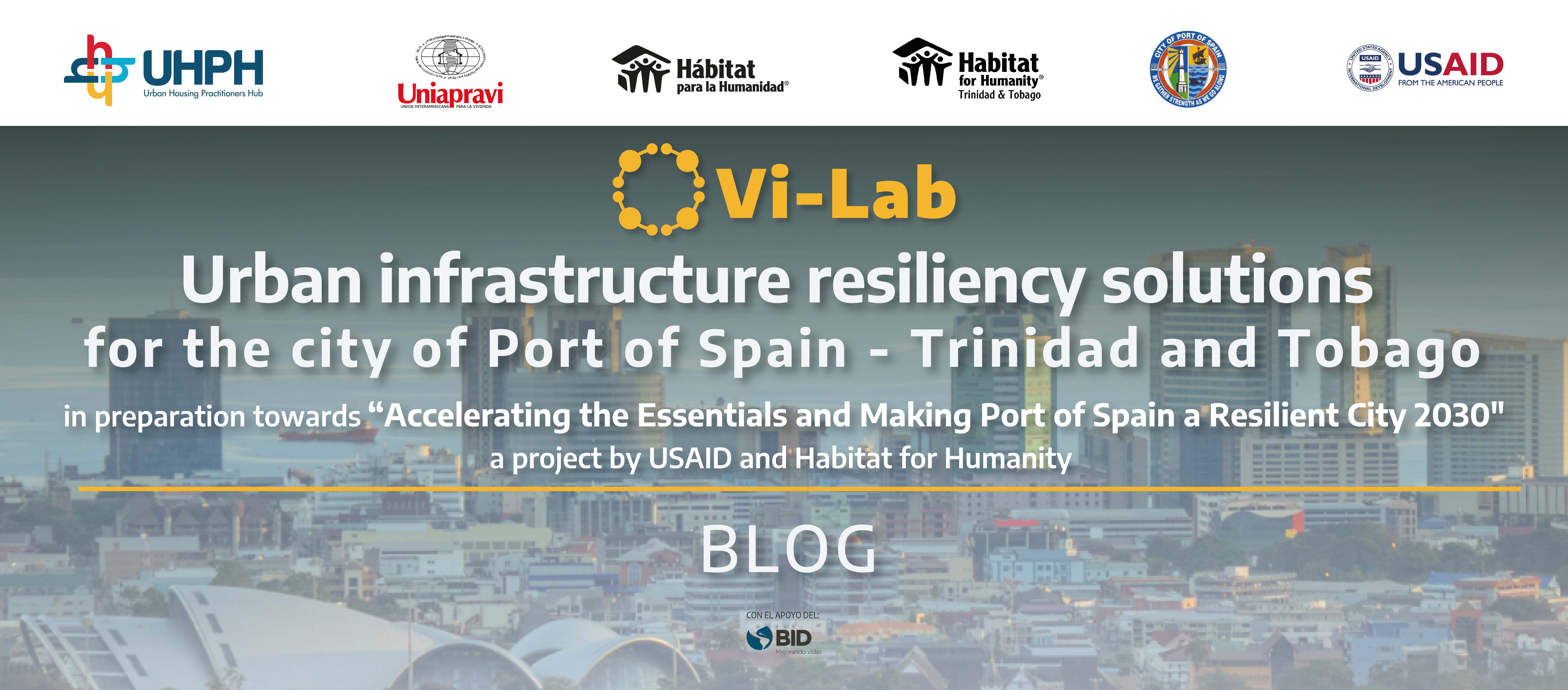The city of Port of Spain is one of the many Caribbean cities facing dangerous natural disasters. As the capital of Trinidad and Tobago sits on the southern Caribbean region, its biggest risk remains the exposure to tropical storms and heavy rainfall resulting in flooding. Other potential dangers include industrial and mine hazards such as water and air pollution due to its industrial development. These conditions jeopardize the country’s economy, mainly dependent on trade and the key position of its ports, specially the one in Port of Spain.
The local government has joined forces with national authorities and international entities to prepare the city for these risks. In 2018, a participatory workshop culminated in the formulation of the Local Action Plan for Disaster Risk Reduction. The city is actively looking to implement the plan and committed to accomplish the Goal #11 of the Sustainable Development Goals – making cities more inclusive, safe, resilient, and sustainable – the Sendei Global Framework and the Paris Agreement.
During the VI-Lab “Urban Infrastructure Resiliency Solutions for the City of Port of Spain”, organized by the Urban Housing Practitioners Hub (UHPH), experts explored multi sectoral strategies and methodological approaches that help deepening the understanding of risky areas, increase risk awareness within communities and implement solutions to reduce vulnerability.
The main practices discussed were from Bogotá and Panama City, and experts from the Inter American Development Bank (IDB), the Miyamoto International program and USAID’s Bureau for Humanitarian Assistance provided new approaches regarding these challenges for the Latin American and Caribbean (LAC) region.
Research from the Miyamoto International initiative shows how in different countries in LAC the expected structural damage due to seismic events is often sub-estimated. Thus, housing and infrastructure policies need to introduce active resiliency strategies such as the consideration of future hazard scenarios, updates to building sector codes and retrofitting home improvement strategies, to address the grave consequences of seismic risk.
The discussion regarding flooding risks in coastal cities was mainly led by the HydroBid Support Centre from the Water and Sanitation Division of the IDB, whose representative explained the implementation of their roadmap towards urban flood risk assessment and mitigation. The identification of risk areas becomes once again the main starting point in reaching adequate resilient strategies. The IDB division works along with communities, agencies, and stakeholders towards the identification of tailored solutions for each community supported. For example, 2D Hydrodynamic Model simulations were used in Trinidad and Tobago’s territory to gather information for establishing mitigation strategies.
Studying specific case studies, the first example presented was Panama City. In 2016 the local administration applied to the 100 Resilient Cities initiative sponsored by the Rockefeller Foundation, to strengthen their efforts in urban resilience and risk management analysis. Thanks to the program, 45 actions were established to deal with the risk of floods and higher waste generation in the city, which is 100% coastal. Mapping vulnerabilities, including the analysis of the inefficient recollection system, accelerated the activation of such strategies. One of the results was related to the implementation of waste retention pilots in rivers, and the suppression of infrastructure projects with undesired climatic results.
In contrast, Bogotá’s strategy relies on the Plan de Acción Climática (PAC), which commits to a 15% reduction in GHG emissions by 2024, followed by a 50% and then 100% reduction by 2030 and 2050, respectively. This plan is based on Climate Risk Assessments, which include mapping risk vulnerabilities, analyzing future trends and evaluating adaptive capacity within vulnerable sectors. The threats identified were torrential floods, mass movements, forest fires and heat islands. The analysis of future trends shows an expected temperature increase of 0.65°C in urban areas and of 0.25°C in rural areas by 2040, together with a 15% decrease in rainfall in the hills of the city, generating a greater probability of fires and a reduction in crops, and an increase in rainfall of 35% in western Bogotá, damaging homes due to higher flood risks. Among the 15 resulting actions is the use of permeable layers and drainage systems to counteract floods, soil stabilization tools and mitigation actions regarding fires. The introduction of these multi sectoral actions within the city land use plan is seen as a necessary step to reach the objective of carbon neutrality and climate resilience.
USAID’s Bureau for Humanitarian Assistance representatives agreed that strategic identification of risks becomes a fundamental first step to reduce climate vulnerability in Port of Spain and other coastal cities with high-risk areas. Pursuing resilient urban development and designing infrastructure using current and future risk scenarios, strengthening financial and institutional capacities, among others, are proposed as key tools to reach an effective response to climate change vulnerabilities.
The lessons provided by Vi-Lab can help the city of Port of Spain plan new strategies to support communities living in marginalized neighborhoods and areas strongly affected by natural disasters.
